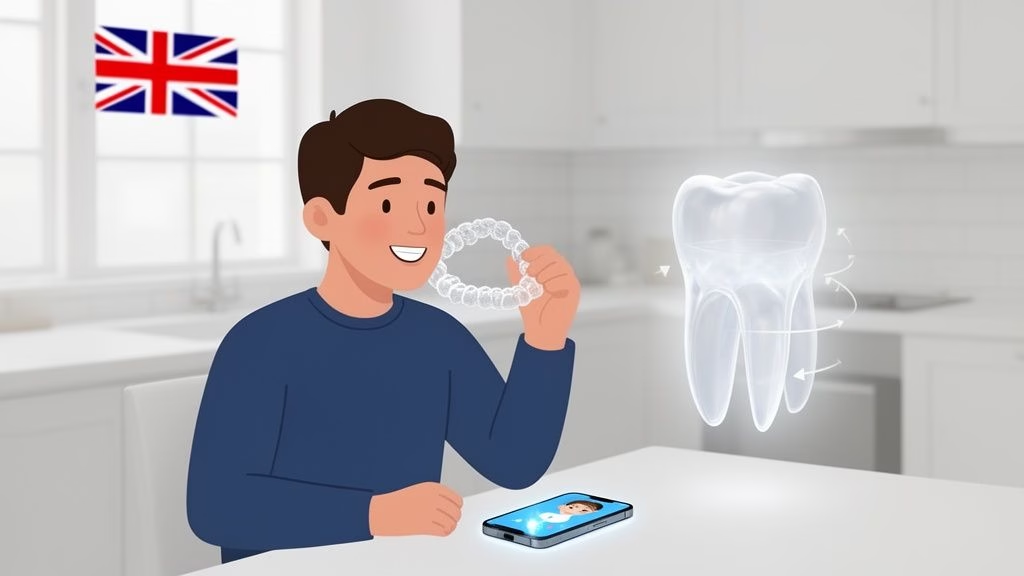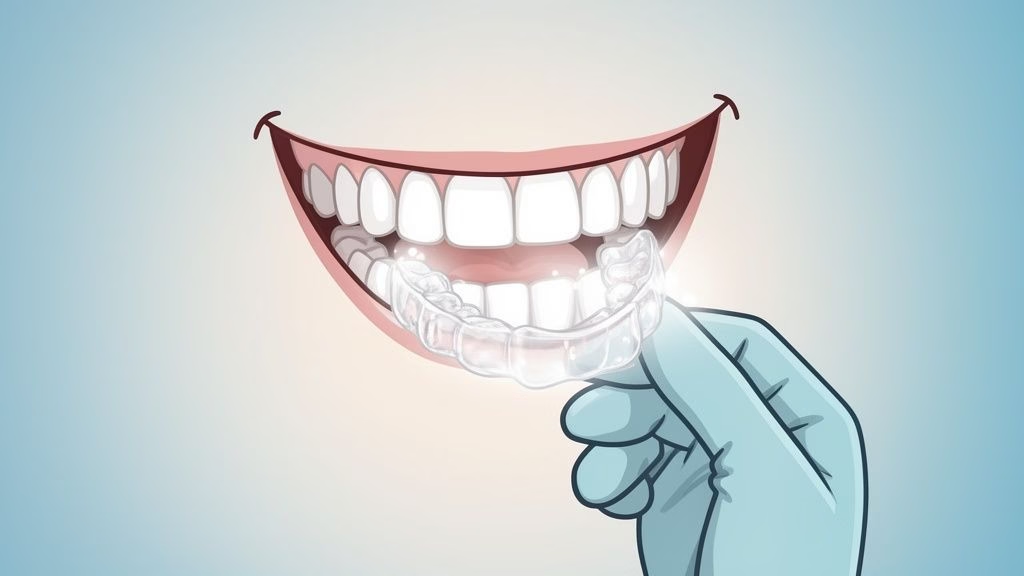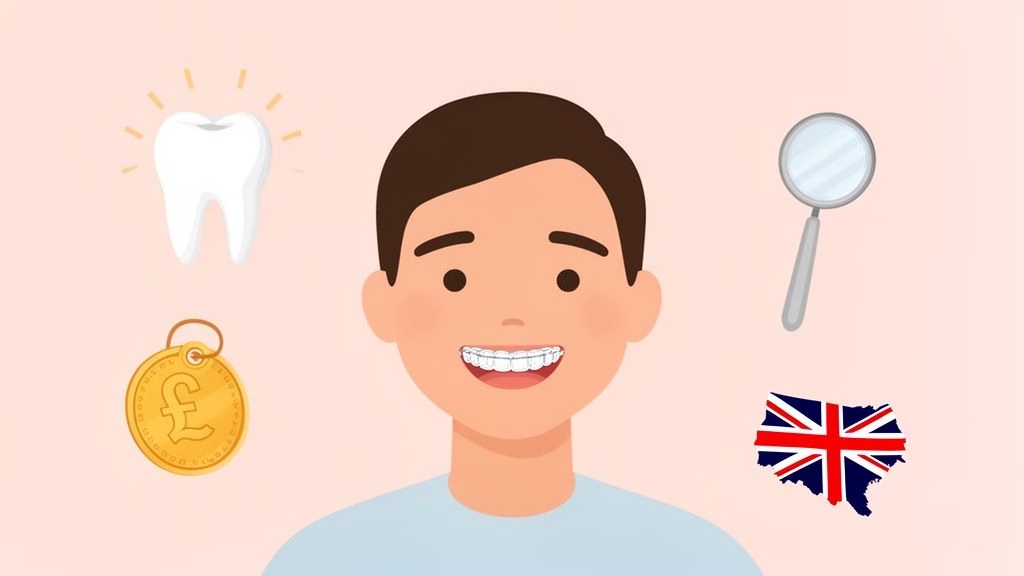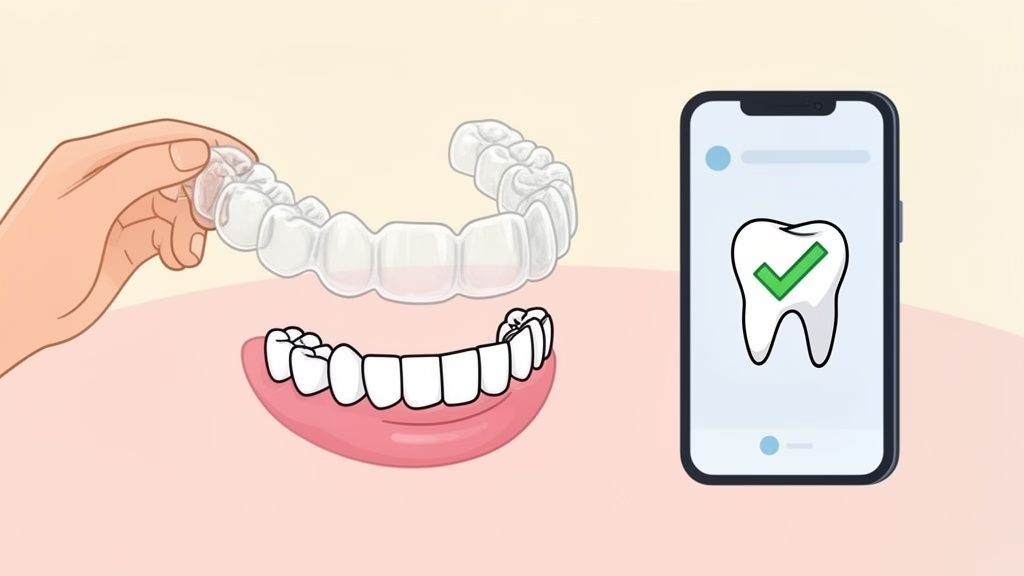White SmileTeeth Whitening: A Professional Guide to Transforming Your Smile

Understanding Modern Teeth Whitening Trends

The path to achieving a brighter smile has seen major changes in recent years. This shift comes from new dental technologies and changing social influences. Understanding these trends helps people make better choices about their teeth whitening options.
The Impact of Social Media and Beauty Standards
Image-focused social media platforms have made teeth whitening more popular than ever before. People now regularly see perfect smiles online, creating higher expectations for dental aesthetics. This has boosted demand for both professional and at-home whitening solutions. The focus on appearance has made teeth whitening a common and accepted cosmetic procedure.
Accessibility and Affordability of Whitening Treatments
More people can now access teeth whitening thanks to diverse treatment options. Choices range from professional dental procedures to home-use products, fitting different budgets and schedules. Online dental consultations and apps have made expert guidance more available. Recent UK statistics from the Oral Health Foundation show strong interest in whitening: 32% of British people want whiter teeth, while 66% have considered treatment. Among those under 35, four in 10 have already had whitening done, and 48% plan to whiten their teeth within a year. Young adults especially seek whiter teeth as part of their self-care routine. Learn more about these trends here: Changing Demographics in Tooth Whitening
The Rise of Personalized Whitening Solutions
Modern teeth whitening now focuses on individual needs. Dental professionals recognize that factors like natural tooth color, stain types, and tooth sensitivity affect treatment success. This leads to custom treatment plans for each patient. By matching solutions to specific needs, people get better results with fewer side effects.
The Science Behind Successful Whitening
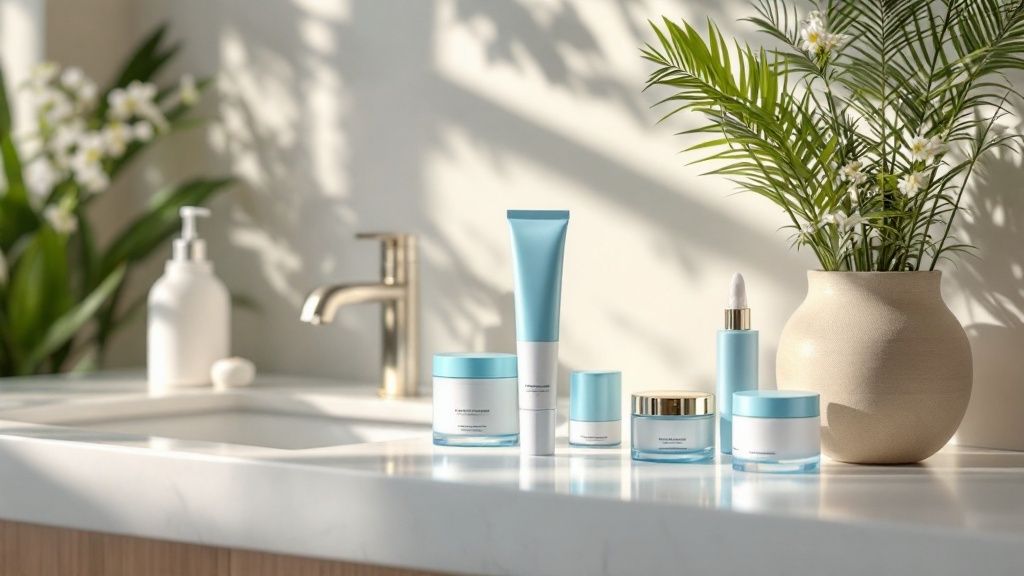
Want to understand how teeth whitening really works? Let’s explore the scientific process behind getting a brighter smile and learn what makes certain treatments more effective than others.
Understanding the Chemistry of Whitening
The key players in teeth whitening are peroxide-based agents – specifically hydrogen peroxide and carbamide peroxide. These compounds break down into smaller molecules that can penetrate your tooth’s enamel layer. Inside the tooth, they target chromogens, the compounds that cause staining. Just like bleach removes stains from fabric by breaking down the staining molecules, peroxide agents break apart the chromogens in your teeth to reveal their natural whiteness.
The Role of Enamel and Stain Types
Your tooth enamel’s structure determines how well whitening works. Teeth with more porous enamel tend to whiten more effectively, though they may also be more sensitive to treatment. Stains fall into two main categories: extrinsic stains from things like coffee and wine that sit on the surface, and intrinsic stains that develop inside the tooth. Surface stains are generally easier to remove, which is why knowing your stain type helps choose the right treatment approach.
How Treatment Timing Impacts Results
The length and frequency of whitening treatments directly affect your results. Like soaking a stained garment, longer contact between the whitening agent and your teeth allows for better stain removal. However, there’s an important balance – too much exposure can harm your enamel and increase sensitivity. Finding the sweet spot between effective whitening and protecting your teeth is essential.
Technological Advancements in Whitening
Modern teeth whitening keeps getting better. LED light-activated systems speed up how quickly peroxide works to whiten teeth. New formulas now include ingredients like potassium nitrate specifically designed to reduce sensitivity during and after treatment. These improvements mean you can achieve the white smile you want with less discomfort. Understanding the science helps you make smart choices about which whitening method will work best for your teeth.
Professional Treatments vs. At-Home Solutions
Deciding between professional teeth whitening and at-home solutions requires careful consideration of your needs and goals. This guide will help you understand the key differences between in-office treatments and home whitening options, so you can make the best choice for your smile.
Professional Whitening: In-Office Advantages
Professional dental whitening delivers quick and noticeable results. Many dental offices also use specialised light or laser technology to speed up the whitening process. Before treatment, your dentist can check for any dental issues that might affect the results or cause sensitivity.
At-Home Whitening: Convenience and Cost
At-home teeth whitening kits offer flexibility to whiten on your own schedule at a lower price point. Many kits include custom-fitted trays that mold to your teeth for even coverage of the whitening gel. While home treatments take longer to show results and may not whiten as dramatically as professional options, they work well for maintaining whiteness or treating mild staining.
Comparing Professional and At-Home Whitening
The teeth whitening industry in the UK is worth over £40 million annually, showing strong consumer demand. Global whitening markets are growing at 5.0% yearly through 2030, driven by increased focus on dental health and aesthetics. For more data, visit Teeth Whitening Industry Statistics. Here’s a comparison of key features:
| Feature | Professional Whitening | At-Home Whitening |
|---|---|---|
| Whitening Speed | Fast, noticeable results | Gradual whitening |
| Cost | Higher | Lower |
| Convenience | Requires office visits | Whiten at your convenience |
| Agent Strength | Higher concentration | Lower concentration |
| Supervision | Dentist-supervised | Self-administered |
Combining Approaches for Optimal Results
Many people get the best results by combining both methods. Starting with professional whitening creates a bright baseline, while at-home products help maintain the results over time. This balanced approach delivers both immediate improvement and lasting whiteness. Understanding these options helps you pick the right whitening method for your needs and smile goals.
Maximizing Your Whitening Success

Getting bright white teeth is just the beginning. To keep your smile looking its best, you need an effective plan for both before and after your whitening treatment. Let’s explore proven strategies that will help you get the most from your teeth whitening and maintain those gorgeous results.
Preparing for Your Whitening Treatment
Just like painting requires proper surface preparation, your teeth need the right prep work for optimal whitening results.
- Professional Cleaning: Schedule a dental cleaning first to remove plaque and surface stains. This gives the whitening agent a clean surface to work with.
- Managing Sensitivity: If you have sensitive teeth, talk to your dentist about using special toothpaste before treatment.
- Clear Goals: Work with your dentist to set realistic expectations based on your natural tooth color and types of stains.
Post-Whitening Care: Maintaining Your Bright Smile
The key to long-lasting results is proper maintenance after your whitening treatment.
- Watch What You Eat: Skip staining foods and drinks like coffee, tea, wine and berries for the first few days. This prevents immediate discoloration.
- Gentle Cleaning: Use a soft toothbrush and whitening toothpaste designed for post-treatment care. Skip harsh, abrasive products that can damage enamel.
- Regular Touch-Ups: Consider periodic at-home treatments through Toothfairy to maintain your results. Professional oversight helps ensure safe, effective touch-ups.
Managing Sensitivity and Troubleshooting
Some people experience temporary tooth sensitivity after whitening. Here’s how to handle it:
- Use Special Products: Apply desensitizing toothpaste or gel as your dentist recommends to reduce discomfort.
- Adjust Your Schedule: If sensitivity continues, try spreading out treatments or using lower-strength whitening products.
- Get Help if Needed: Contact your dentist right away about any unusual or lasting pain to check for underlying issues.
Following these care guidelines before and after treatment will help you get better results that last longer. The best approach often combines professional treatments with personalized maintenance using tools like Toothfairy to protect your investment in a brighter smile.
Is Teeth Whitening Right for You?
Getting whiter teeth isn’t just about aesthetics – it’s about finding an approach that fits your specific needs and lifestyle. Before starting any whitening treatment, it’s important to understand what factors affect results and what you can realistically expect.
Factors Influencing Whitening Success
Your age, dental history, and daily habits play a big role in how well whitening treatments work. Younger patients with minimal dental work often see more dramatic results compared to older adults who have existing restorations. Understanding your individual situation helps set realistic expectations.
What you eat and drink also affects both initial staining and how long whitening results last. People who frequently drink coffee, tea, or red wine tend to experience faster re-staining than those who avoid these beverages. Consider your lifestyle habits when choosing a whitening method.
Special Considerations for Different Needs
Some dental conditions require extra care with whitening. People with sensitive teeth may need special products to minimize discomfort. Existing dental work like crowns or veneers won’t change color with whitening treatments. Talk to your dentist about these factors to create a treatment plan that works for you.
Different types of tooth stains respond differently to whitening. Surface stains from food and drinks are usually easier to remove compared to internal stains. For example, stains caused by antibiotics during tooth development often resist standard whitening methods.
Recent data shows interesting trends in who seeks whitening treatments. 24% of single adults in the UK have had their teeth whitened – more than double the rate of people in relationships. This shows how dental aesthetics matter to diverse groups of people. Learn more: Single Adults and Teeth Whitening Trends
Making an Informed Decision
Deciding if teeth whitening is right for you means carefully looking at your situation. Talk with a dental professional to find the best approach based on your needs, goals, and oral health. They can help you understand treatment options and guide you toward a brighter smile using the Toothfairy app. Taking time to choose the right treatment leads to better results.
Essential Safety Protocols and Best Practices
Good teeth whitening results shouldn’t compromise your oral health. Understanding key safety measures and following proper guidelines helps ensure you get a brighter smile while protecting your teeth. Let’s explore the essential safety protocols and best practices you need to know.
Understanding Potential Risks
When done properly, teeth whitening is generally safe. However, some risks can occur without proper precautions. Tooth sensitivity is one of the most common side effects – you may experience mild to moderate discomfort during or after treatment. Gum irritation can happen if whitening products contact your gums. Without proper use, enamel damage is also possible and could increase cavity risk.
Choosing Safe and Effective Products
Product selection plays a key role in whitening safety. Look for items with the ADA Seal of Acceptance, which confirms they meet strict safety standards. For home treatments, check the whitening agent concentration – higher levels need more caution. Consider your specific needs too. If you have sensitive teeth, pick products made for sensitivity that contain ingredients like potassium nitrate to reduce discomfort.
The Importance of Professional Guidance
Getting input from a dental professional before starting whitening is highly recommended. A dentist can check your oral health, spot any issues that could affect treatment, and suggest the best approach for your teeth. This personalized advice helps prevent problems and improve results – similar to how a tailor ensures perfect clothing fit.
Best Practices for Safe Whitening
Follow these key guidelines for safe and effective whitening:
- Follow Instructions: Use products exactly as directed, including treatment duration and frequency
- Avoid Overuse: Don’t whiten more often or longer than recommended to prevent damage
- Maintain Good Oral Hygiene: Brush and floss regularly, especially after whitening sessions
- Listen to Your Body: Stop treatment if you have lasting discomfort and see your dentist
- Regular Checkups: Keep dental appointments to monitor your oral health progress
Identifying Quality Providers
When seeking professional whitening, choose qualified and experienced dentists. Review patient feedback and ask trusted contacts for recommendations. Good providers take time to explain procedures, address concerns, and give clear aftercare instructions for maintaining results.
Following these safety measures lets you work toward a brighter smile while keeping your teeth healthy. Remember that lasting results come from both proper whitening technique and ongoing good oral care habits.
Ready to achieve your dream smile? Start your journey towards whiter teeth with the professional guidance and safe solutions offered by Toothfairy.
Last updated on November 3, 2025

Dr. Deepak
ToothFairy Care Team.
Dr. Deepak
ToothFairy Care Team.
